
Operator's Manual
20 Gallon Wet/Dry Vacuum
Model No. 125.12009
CAUTION: Before using this
product, read this manual
and follow all its Safety Rules
and Operating instructions.
• Safety
• Assembly
• Operation
• Maintenance
• Parts
• Espa_ol =p_gina 16
Sears Brands Management Corporation, Hoffman Estates, IL 60179 U.S.A
WWW. crafts man. COrn

Warranty
CRAFTSMAN ONE YEAR FULL WARRANTY
FOR ONE YEAR from the date of purchase, this product is warranted against
defects in material or workmanship. A defective product will be replaced free of
charge.
For warranty coverage details to obtain free replacement, visit the web page:
www. craftsman.com/warranty
This warranty does not cover bags, filters, hose or attachments, which are
expendable partsthat can wear out from normal use within the warranty period.
This ONE YEAR warranty is void if this product is ever used while providing
commercial services or if rented to another person. For 90 DAY commercial and
rental use terms, seethe Craftsman warranty web page.
Thiswarranty gives you specific legal rights, and you may also have other rights
which vary from state to state.
Sears BrandsManagement Corporation, Hoffman Estates, JL60179
iMPORTANTSAFETY
READ AND UNDERSTANDALL
iNSTRUCTiONS BEFORE USING THiS
VACUUM
Read and understand this operator's
manual and all labels on the Wet/Dry
Vacuum cleaner before operating. Safety is
a combination of common sense, staying
alert and knowing how your vacuum works.
Use this Wet/Dry Vac only as described in
this manual. To reduce the risk of personal
injury or damage to your Wet/Dry Vac, use
only Craftsman recommended accessories.
Household Type
SAVETHiSMANUAL
FOR FUTURE REFERENCE.
When using an electrical appliance,
basic precautions should always be
followed includingthe following:
WARNING: o
THE RISK OF FIRE, ELECTRIC
SHOCK OR iNJURY:
, Do not run vac unattended.
•Do not vacuum, or use this Wet/Dry Vac
near flammable liquids, gases, or explosive
vapors like gasoline or other fuels,
lighter fluids, cleaners, oil-based paints,
natural gas, hydrogen, or explosive dusts
like coal dust, magnesium dust, grain
dust, or gun power. Sparks inside the
iNSTRUCTiONS
motor can ignite flammable vapors or
dust.
* Do not vacuum anything that is burning
or smoking, such as cigarettes, matches,
or hot ashes.
* Keep cord away from heated surfaces.
* Do not expose to rain. Store indoors.
, Do not unplug by pulling on cord. To
unplug, grasp the plug, not the cord.
* Do not use with damaged cord, plug or
other parts.
* If vac is not working as it should, has
been dropped, damaged, left outdoors,
or dropped into water, take it to a service
dealer for inspection and repair before
using it again.
, Do not pull or carry by cord, use cord as
handle, close a door on cord, or pull
cord around sharp edges or corners.
, Do not run Wet/Dry Vac over cord.
* Do not handle plug or the Wet/Dry Vac
with wet hands.
* To reduce the risk of health hazards
from vapors or dusts, do not vacuum
toxic materials.
* Do not store near hazardous materials.
* Do not use this Wet/Dry Vac with a torn
filter or without the filter installed except
when vacuuming liquids as described in
the operation section of this manual.
* Do not allow to be used as a toy. Close
attention is necessary when used by or
near children.
*To reduce the risk of injury from accidental

starting,unplugpowercordbefore
changingorcleaningfilter.
•DonotleaveWet/DryVacunattended
whenpluggedin.Unplugfromoutlet
whennotinuseandbeforeservicing.
•TurnoffWet/DryVacbeforeunplugging.
•Donotputanyobjectintoventilation
openings.Donotvacuumwithany
ventilationopeningsblocked;keepfree
ofdust,lint,hairoranythingthatmay
reduceairflow.
•Keephair,looseclothing,fingers,and
allpartsofbodyawayfromopenings
andmovingparts.
•Toreducetheriskoffalls,useextra
carewhencleaningonstairs.
When using as blower:
• Direct air discharge only at work area.
• Do not use Wet/Dry Vac as a sprayer.
• Do not direct air at bystanders.
• Keep children away when blowing.
• Wear safety goggles.
Polarized Plug
To reduce the risk of electrical shock, this
appliance has a polarized plug (one with
the blade wider than the other). This plug
will fit in a polarized outlet only one way.
If the plug does not fit fully in the outlet,
reverse the plug. If it still does not fit,
contact a qualified electrician to install the
proper outlet. Do not change the plug in
any way. Double insulation [] eliminates
the need for the three wire gro_unded
power cord and grounded power supply
system.
Observe the followingwarnings that
appear on the motorhousing of your Vac:
'_ OUBLE INSULATED
GROUNDING NOT REQUIRED.
WHEN SERVICING USE ONLY
IDENTICAL REPLACEMENT PARTS.
A WARNING
= For your own safety, read and
understand owner's manual.
oDo not allow unit to be in operation if
unattended.
Do not pick up hot ashes, coals,
toxic, flammable or other hazardous
materials.
, Do not use around explosive liquids
_or vapors, j
WARNING: To reduce the risk of
electric shock =do not expose to rain =
store indoors.
,_, WARNING: When using as a blower:
Wear safety goggles labeled "ANSI
Z87.1" (Canada CSA Z94.3) on the
package. Turn unit off before setting on
ground or releasing grasp of handle.
Electric shock could occur if used on
wet surfaces. Direct tool discharge only
at work area. Do not direct discharge at
bystanders. Keep children away.
Extension Cords
When using an extension cord with your VVet/Dry Vac refer to the following table to
determine the required A.W.G. (American Wire Gauge) wire size. Before using
Wet/Dry Vac, make sure it is in good working condition, including power cord.
Also, make sure extension cord is in good working condition prior to use. Make
repairs or replacements before using the vacuum cleaner. Only use extension cords
that are rated for outdoor use.
Length of Extension Cord
25 Feet 50 Feet 100 Feet 150 Feet
110V-120V
7.5 Meters 15.25 Meters 30.5 Meters 45.7 Meters
Amps A.W.G Wire Size
0-6 18 16 16 14
7-10 18 16 14 12
11-12 16 16 14 12
13-16 14 12 Not recommended

Introduction
This Wet/Dry Vac is intended for
vacuuming wet and dry materials and
may be used as a blower.
Read this operator's manual to
familiarize yourself with the product
features and to understand the specific
usage of your new Wet/Dry Vac.
Table of Contents
Section Page Section Page
Warranty ................................................. 2 Maintenance ......................................... 10
important Safety instructions ........... 2 Emptying the Collection Tank ........ 10
Polarized Plug .................................... 3
Extension Cords ..................................... 3
introduction ............................................ 4
Table of Contents ................................... 4
Assembly ................................................ 5
Carton Contents List ......................... 5
Unpacking Your Wet/Dry Vacuum
& General Assembly .......................... 6
Operation ................................................ 7
Vacuuming Dry Materials .................. 7
installing & Cleaning
the Supplied Cartridge Filter .......... 10
Installing A Replacement
Cartridge Filter ................................ 11
Installing & Cleaning
Foam Sleeve Filter.......................... 12
Cleaning & Disinfecting
the Wet/Dry Vac .............................. 12
Storage ............................................. 12
Troubleshooting .................................... 13
Repair Parts ........................................... 14
Vacuuming Liquids ............................ 8
Blowing Feature ................................. 9
Noise Diffuser ..................................... 9

Assembly
Remove entire contents of carton and
check for parts inside the collection
tank. Check each item against the
Carton Contents List. If any parts are
missing or damaged please call
1-800-469-4663 for replacement.
Carton Content List
Key Description .......................... Qty.
A Vac Assembly .......................... 1
B Hose ........................................ 1
C Extension Wands .................... 2
D Utility Nozzle ........................... 1
E Crevice Tool............................. 1
F Floor Squeegee Nozzle .......... 1
G Foam Sleeve Filter .................. 1
H Cartridge Filter ........................ 1
I Caster Assembly Screws ........ 4
J Caster Feet Assemblies .......... 4
K Hose Storage Rack ................. 2
L Operator's Manual .................. 1
M Noise Diffuser .......................... 1
( )
M
E F G
J K
L
On/Off Switch --I
Power Head
Vacuum Port f
/
Collection Tank
Handle
-- Hose Storage Rack
Blower Port
Latch
Base
Caster
Caster Assemblies
Drain

Assembly (continued)
A Phillps head screw driver is required.
,_, WARNING: Do not plug in power
cord to power outlet, make sure
plug is disconnected before
assembling the wet/dry vac.
UNPACKING YOUR WET/DRY
VACUUM & GENERAL ASSEMBLY
1. Verify that the power cord is
disconnected from the outlet.
(Fig. 1)
2. Undo the latches. (Fig. 2)
3. Lift the power head off the collection
tank and place on a fiat clean
surface. (Fig. 3)
4. Remove the contents from inside the
collection tank, make sure you have
all contents as listed on carton
content list on page 5. (Fig. 4)
5. With the power head removed, turn
the collection tank upside down.
insert the four caster assemblies
into each socket. Apply pressure
until caster assemblies fully seated.
(Fig. 5) Secure them with the screws
provided. Do not over tighten the
screws.
6. Position the hose storage rack
as illustrated. Fully insert one end
of the hose storage rack into the
slot illustrated buy the arrow, then
pull the other end of the hose
storage rack to align with the
corresponding arrow and insert into
the slot until it is secured in place.
(Fig. 6a =Fig. 6d)
7. Place the power head back on the
collection tank, and secure into
place using the 2 side latches.
(Fig. 7 & Fig. 8)
8. insert the locking end of the hose
into the port on the collection tank
and turn to lock in to place. (Fig. 9)
9. Choose the desired accessory and
insert onto the end of the hose
(Fig. 10)
10. After vac use, store hose,
accessories and cord as illustrated
on page 12.

Operation
Vacuuming Dry Materials
,_ WARNING: Be sure to read, understand and apply all the information in the
important Safety instructions section at the beginning of this operator's manual.
Do not vacuum in areas with flammable gases, vapors, or explosive dusts in the
air. Flammable gases or vapors include but are not limited to: lighter fluid,
solvent type cleaners, oil-base paints, gasoline, alcohol or aerosol sprays.
Explosive dusts include but are not limited to: coal, magnesium, grain or gun
powder. To reduce the risk of health hazards from vapors or dust, do not
vacuum toxic materials.
1. Verify that the power cord is
disconnected from the outlet. (Fig. 1)
2. For dry vacuuming, the cartridge filter
must be installed correctly. To verify,
please refer to installing Cartridge Filter
on page 10.
3. Place the power head back on the
collection tank, and secure it in place
using the latches. (Fig. 2)
4. insert the locking end of the hose into
the vacuum port and lock in place. (Fig.
3).
5. Choose the desired accessory and
insert onto the end of the hose. (Fig. 4)
6. Plug the power cord into the outlet.
(Fig. 5)
7. Turn the motor on by pressing the
power switch to the '1'(ON) position
and begin vacuuming. (Fig. 6)
8. Once you have completed vacuuming,
press the power switch to the '0' (OFF)
position and unplug the power cord
from the outlet.
O = OFF I = ON
DO NOT USE THE CARTRIDGE FILTER
FOR LiQUiD VACUUMING.
CAUTION: Do not vacuum drywall dust,
fireplace soot or ash with standard
Wet/Dry filter. This is very fine dust
which will not be captured by the filter
and may cause damage to motor. To
purchase the fine dust filter, call 1-800-
469-4663 or visit a Sears store.

Operation (continued)
Vacuuming Liquids
,_ WARNING: Be sure to read, understand and apply all the information in the
important Safety instructions section at the beginning of this operator's manual.
Do not vacuum in areas with flammable gases, vapors, or explosive dusts in the
air. Flammable gases or vapors include but are not limited to: lighter fluid,
solvent type cleaners, oil=base paints, gasoline, alcohol or aerosol sprays.
Explosive dusts include but are not limited to: coal, magnesium, grain or gun
powder. To reduce the risk of health hazards from vapors or dust, do not
vacuum toxic materials.
WARNING: Do not plug in power cord to power outlet, make sure plug is
disconnected before assembling the Wet/Dry Vac.
1. Verify that the power cord is
disconnected from the outlet. (Fig. 1)
2. Remove cartridge filter as shown in
Removing and Cleaning Cartridge
Filter on page 10. Then install the
foam sleeve filter as shown in
Installing Foam Sleeve Filter on page
12 and secure power head back on
the collection tank.
DO NOT USE THE CARTRIDGE FILTER
FOR LIQUID VACUUMING.
3. Fit the desired nozzle to the vacuum
hose. (Fig. 2)
4. Verify that the power switch isin the 'O'
OFF position before plugging the
power cord into the outlet. (Fig. 3)
5. Turn the motor on by pressing the
switch to the '1'ON position. (Fig. 4)
6. Once you have completed vacuuming,
press the power switch to the 'O' (OFF)
position and unplug the power cord
from the outlet.
7. After use, empty the collection tank by
unscrewing the drain cap and drain
liquids into suitable receptacle or
drain. (Fig. 5) Remember to refit the
drain cap to the tank after draining.
iMPORTANT! When vacuuming large
quantities of liquids, do not immerse the
nozzle completely in the liquid; leave a
gap at the tip of the nozzle opening to
allow air inflow. The machine isfitted with
afloat valve that stops the suction action
when the collection tank reaches its
maximum capacity. You will notice an
increase in motor speed. When this
happens, turn off the machine,
disconnect from power supply, and drain
the liquid into a suitable receptacle or
drain. To continue vacuuming, refit the
collection tank with the drain cap. After
wet vacuuming, turn the machine off and
remove plug from power supply. Empty
the collection tank, clean and dry the
inside and outside before storage.
REMEMBER! The foam filter must be
removed after wet vacuuming and a
cartridge filter must be installed before
dry vacuuming again.

Operation (continued)
Blowing Feature
WARNING:
WARNING:
WARNING:
Always wear safety goggles complying with ANSi Z87.1 (or in
Canada, CSA Z94.3) before using blower.
Keep bystanders clear from blowing debris.
Wear a dust mask if blowing creates dust that might be inhaled.
This Wet/Dry Vac has blowing capabilities.
Touse the blower feature follow the
instructionslisted.
1. Verify that the power cord is
disconnected from the outlet. (Fig. 1)
2. Make sure the collection tank isempty
before using as a blower.
3. Remove hose from the vacuum port.
4. Insertthe larger end of the hose intothe
blowing port on the back side of the
power head. (Fig. 2)
5. Fit the desired attachment to the hose.
(Fig. 3)
6. Verify that the power switch isinthe 'O'
OFF position before plugging the power
cord intothe outlet. (Fig. 4, Fig. 5)
7. Before turning ON the vac, firmly hold
the loose end of the hose. Turn the
motor on by pressing the switch to the 1'
ON position. (Fig. 6)
8. Once you have completed blowing,
press the power switch to the 'O' (OFF)
position and unplug the power cord
from the outlet. (Fig. 7)
Noise Diffuser
For quiet operation, installthe noise diffuser
intothe blower port by insertingthe locking
end of the diffuser intothe blower port and
turning clockwise to lock intoplace.

Maintenance
Emptying the Collection Tank
1. Verify that the power cord is
disconnected from the outlet. (Fig. 1)
2. Disconnect the hose from the vacuum.
(Fig. 2)
3. Undo the latchesand remove the power
head from the collection tank. (Fig. 3)
Place power head on asoft, clean
surface upside down.
4. Clear all dirt or debris from the collection
tank and hose intoa proper waste
container. (Fig. 4)
5. Clean or replace the filters.
6. Check the hose, attachments, and
power cord to verify that they have not
been damaged.
7. Place power head on collection tank and
secure latches.
NOTICE! The filter includedismade of
high quality material designed to stop small
dust particles. The filter should be used for
dry pick-up only. A dry filter is necessary
to pick up dust. Ifthe dust filter is wet, it
will clog quickly and be very difficult to
clean. Handle the filter carefully when
removing it for cleaning and replacing it.
Check the filters for tears or small holes; a
small hole can let dust pass through and
out of the cleaner. Do not use a filter with
holes or tears; replace it immediately.
Installing & Cleaning the Supplied Cartridge Filter
installingCartridge Filter
1. Verify that the power cord is
disconnected from the outlet. (Fig. 1)
2. Undo the latches and remove the
power head from the collection tank.
3. Place power head on aclean surface in
upside down position.
4. Slide the cartridge filter over the filter
cage. (Fig. 2) Carefully push filter down
until it isfully seated on the power head.
(Fig. 3)
5. Tosecure filter; put on retainer nut and
turn clockwise to tighten until snug. Do
not over tighten. (Fig. 4)
Removing and Cleaning Cartridge Filter
1. Position power head inthe upside down
position. If the retainer nut was used to
secure the filter, remove retainer nut by
turning counter clockwise.
2. Carefully lift filter up from filter cage.
(Fig. 5)
NOTE: For best cartridge filter cleaning
results, cleaning should be conducted
outdoors and not indoors.
3. Toclean adry cartridge filter after it has
been removed, gently tap it against the
insidewall of the container or brush the
dirt off. Debris will begin to break up,
loosen and fall.
10

Maintenance (continued)
iMPORTANT! Clean or change the
cartridge filter regularlyfor best
performance.
ALWAYSUSECARTRIDGE FILTERFOR
DRYVACUUMING. Ifthe machine is
used without the cartridge filter, the motor
will burn out and the warranty will be voided.
Always keep spare filters on-hand.
A
WARNING: Always disconnect
the plugfrom the power outlet
before removing the power head
from the collection tank.
Installing A Replacement Cartridge Filter
Craftsman Filter with Rubber Top Craftsman Filter with Plastic Top
THiS VACUUM CLEANER iS DESIGNED TO USE CRAFTSMAN CARTRIDGE FILTERS.
1. Carefully slide the Craftsman cartridge
filter over the filter cage and press
down on the outside edge of the filter
until the rubber gasket on the bottom of
the filter fits securely around the base
of the filter cage and against the lid.
(Fig. 1)
2. Align the small center hole inthe top of
the filter over the post on the filter cage.
Press firmly on top of the filter near the
postto allow the filter to seat over the
post. (Fig. 2)
3. Tofurther secure filter, put on retainer
nut and turn clockwise to tighten until
snug. (Fig. 3)
NOTE: Always retain the original retainer nut. Do not misplace itwhile removingor replacing
the cartridge filter.
1. Carefully slide the Craftsman cartridge
filter over the filter cage with the flat end
of the filter towards the powerhead.
(Fig. la)
2. Carefully pushfilter down until it isfully
seated on the power head. (Fig. 2a)
3. Tosecure filter; put on retainer nut and
turn clockwise to tighten until snug. Do
not over tighten. (Fig. 3a)
11

Maintenance (continued)
Installing & Cleaning Foam Sleeve Filter
installing Foam Sleeve Filter
1. Verify that the power cord is
disconnected from the outlet. (Fig. 1)
2. Remove power head from collection
tank. if cartridge filter isinstalled,
remove as shown on page 10 "Removing
and Cleaning Cartridge Filter".
3. Carefully slide foam sleeve filter
down over the filter cage making sure
the whole cage iscovered. (Fig. 2 & 3)
4. Place power head on collection tank and
secure latches.
Cleaning and Disinfecting the
Wet/Dry Vac
Tokeep your Wet/Dry Vac looking its best,
clean the outside with a dampened cloth,
then dry with a clean towel.
Toclean the insideof the collection tank:
1. Empty debris out.
2. Wash collection tank thoroughly with
warm water and mild soap.
3. Wipe out with dry cloth.
Before prolonged storage or as needed
(i.e.after waste water pick up)the
collection tank should be disinfected.
Todisinfect the collection tank:
1. Pour 1gallon of water and 1teaspoon
chlorine bleach intothe collection tank.
2. Let solution stand for 20 minutes,
carefully swishing every few minutes,
making sure to wet all insidesurfaces
of the collection tank.
3. Empty collection tank after 20 minutes.
Rinse with water until bleach smell
isgone. Allow collection tank to dry
completely before sealing the motor on
the collection tank.
Cleaning Foam Sleeve Filter
1. With the removed power head in the
upside down position, carefully
remove foam sleeve filter. (Fig. 4)
2. Usea mild soap and water solution to
wash foam sleeve filter and rinse with
clean water. (Fig. 5)
3. Allow filter to air dry before installingand
using again.
Storage
Before storing your vac, the collection tank
should be emptied and cleaned. The cord
should be wrapped and hung on the hook
of the handle. The hose and accessories
should be stored as illustratedabove
(Fig. 1-3) so they can be readily available
when needed. Store vac indoors.
12

Troubleshooting
i_ ARNING: TO REDUCE THE RISK OF ELECTRIC SHOCK
UNPLUG BEFORE TROUBLESHOOTING.
Problem Possible Causes Corrective Action
Vacuum will not operate. 1) No power supply. 1) Check power supply - cord,
breakers, fuses.
2) Faulty power cord. 2) Unplug and check the power
cord. If damaged, have it
repaired by a professional.
3) Collection tank is full. 3) Empty collection tank.
4) Switch in the wrong position. 4) Press the ON 1' button on
the power head.
Dust comes out from motor cover. 1) The cartridge filter is 1) Attach or replace the
missing or damaged, cartridge filter.
Reduced efficiency and 1) There is a blockage in the 1) Check nozzle, hose and
motor/speed vibration, nozzle, hose, or the tank tank inlets for blockage.
inlet. The dust filter is Take off the filter and clean it.
clogged by fine dust. Or install new filter.
13

Repair Parts
125.12009 20 Gallon Wet/Dry Vac
Always order by part number, not by key number. Always mention the model number when
ordering parts. The model number is found on the serial plate located on the vacuum. To
order parts, call 1-800-469-4663.
_l_ WARNING: Servicing of double-insulated wet/dry vacuum.
With double-insulated wet/dry vacuum, two systems of insulationare provided instead
of grounding. No grounding means is provided on adouble-insulated appliance, nor
should a means for grounding be added. Servicing a double insulatedwet/dry vacuum
requiresextreme care and knowledge of the system, and should be done only by
qualified service personnel. Replacement partsfor a double-insulated wet/dry vacuum
must be identicalto the parts they replace. Your double-insulated wet/dry vacuum
is marked with the words 'double insulated' and the symbol r_ (square within a
square) may also be marked on the appliance.
i'-'1
Key No. Part Number Description Quantity
1 VJHAPF.10.07 Hose Storage Rack 2
2 VJKAPF.10.00.X0 Power Head 1
3 TVQTZS.0&YZ.W2.00 Float 1
4 VJ51PE10.04.W2.00 Filter Cage 1
5 TVQTDK.17.01.F3 Latch 1
6 VJKBPE10.10.F3.SY Collection Tank 1
7 TVQTXK.16.01 Vacuum port deflector 1
8 TVQTXK.19.01 Hose inlet 1
9 VB01 PF.X0.02 Drain Cap Assembly 1
10 TVQTJC.29.00 Caster and Foot Assembly 4
11 17854 Extension Wands 2
12 16922 Utility Nozzle 1
13 FV6761.00.00 Floor / Squeegee Nozzle 1
14 16902 Crevice Tool 1
15 16928 Hose 1
16 17888 Foam Sleeve 1
17 17816 Cartridge Filter 1
18 FV9543.11.01 Nut 1
19 TVQTZH.02.CF.W2.01Noise Diffuser 1
20 VJKBBZ.20.D6.01 Operator's Manual 1
14

Repair Parts {Continued)
20 Gallon Wet/Dry Vac
-7
i i
i ;
11
6 12
8
._" ........ -]
L._....... J
2O
15
Page is loading ...
Page is loading ...
Page is loading ...
Page is loading ...
Page is loading ...
Page is loading ...
Page is loading ...
Page is loading ...
Page is loading ...
Page is loading ...
Page is loading ...
Page is loading ...
Page is loading ...
Page is loading ...
Page is loading ...
-
 1
1
-
 2
2
-
 3
3
-
 4
4
-
 5
5
-
 6
6
-
 7
7
-
 8
8
-
 9
9
-
 10
10
-
 11
11
-
 12
12
-
 13
13
-
 14
14
-
 15
15
-
 16
16
-
 17
17
-
 18
18
-
 19
19
-
 20
20
-
 21
21
-
 22
22
-
 23
23
-
 24
24
-
 25
25
-
 26
26
-
 27
27
-
 28
28
-
 29
29
-
 30
30
Craftsman VJH2012PF Owner's manual
- Category
- Vacuum cleaners
- Type
- Owner's manual
Ask a question and I''ll find the answer in the document
Finding information in a document is now easier with AI
in other languages
Related papers
-
Craftsman 12512008 Owner's manual
-
Craftsman 12517608 Owner's manual
-
Craftsman 12009 Owner's manual
-
Craftsman VJF910PF Owner's manual
-
Craftsman 12008 Owner's manual
-
Craftsman 12538909 Owner's manual
-
Craftsman 12512006 Owner's manual
-
Craftsman 1.5AMP Manufacturer's Warranty
-
Craftsman 12512004 Owner's manual
-
Craftsman 12005 User manual
Other documents
-
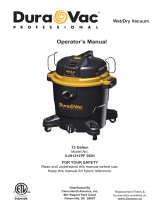 DURAVAC 8809816 Owner's manual
DURAVAC 8809816 Owner's manual
-
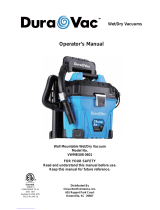 Dura Vac VWMB508 0401 User manual
Dura Vac VWMB508 0401 User manual
-
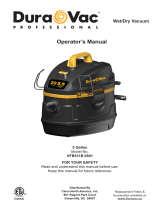 DURAVAC 8809790 Owner's manual
DURAVAC 8809790 Owner's manual
-
Vacmaster VBVA1010PF User manual
-
Vacmaster VOC809pf User manual
-
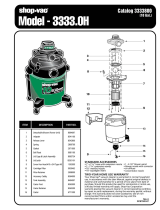 Shop Vac 3333.OH Owner's manual
Shop Vac 3333.OH Owner's manual
-
Vacmaster VOC1210PF User manual
-
Vacmaster VJC1210PF User manual
-
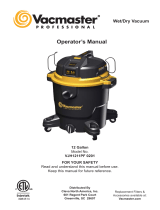 Vacmaster Professional VJH1211PF 0201 Operating instructions
Vacmaster Professional VJH1211PF 0201 Operating instructions
-
Vacmaster VJH1612PF 0201 Owner's manual


































